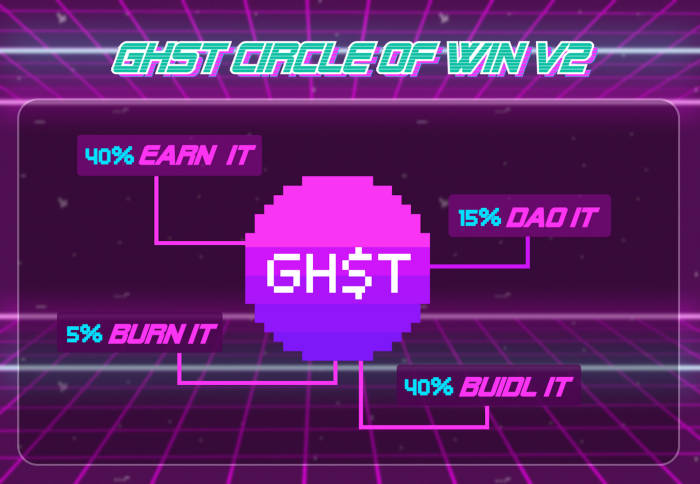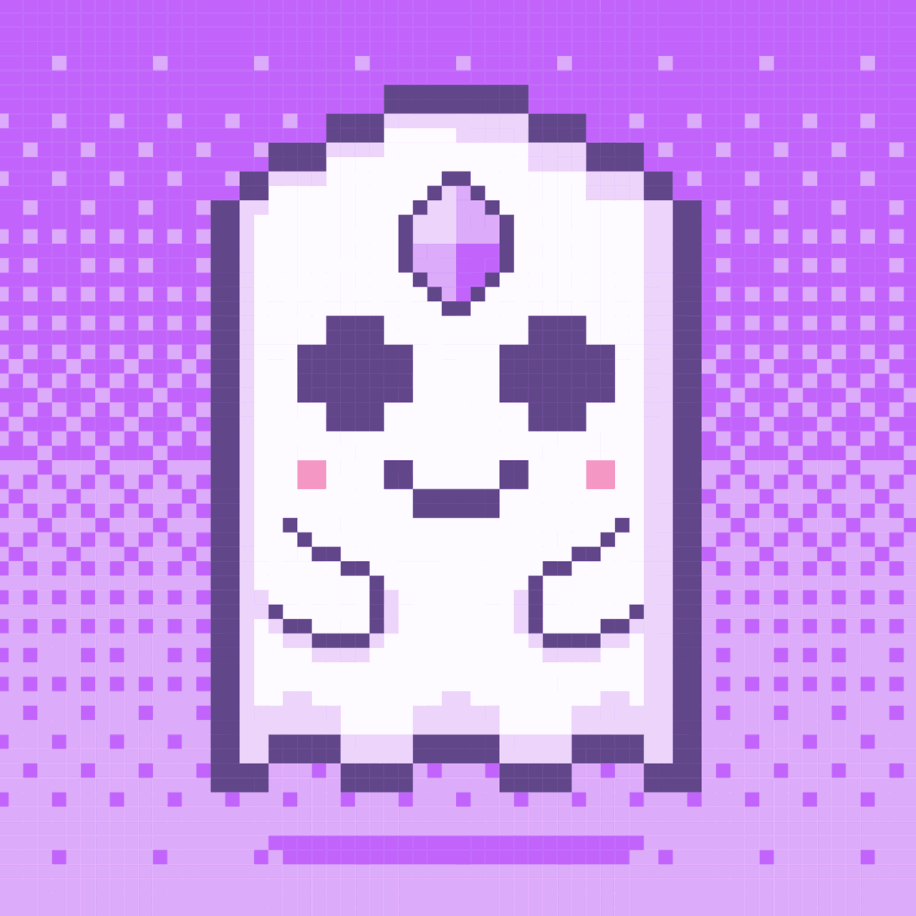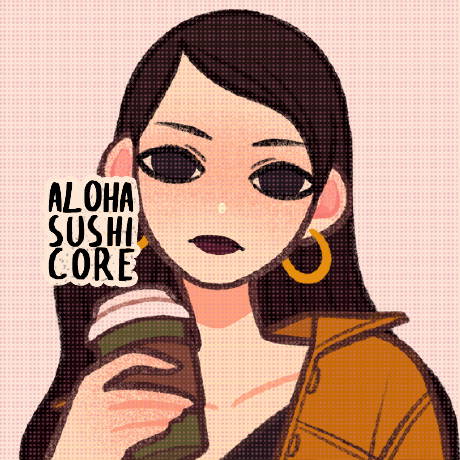Tokenomics

wEn GHST $5???
Tokenomics? Who even cares? WeN mOoN??
We do, and so should you. If you're planning to invest in a project like GHST (or any project for that matter), it's important to understand how the broader ecosystem works. At the end of the day this is how we can all win with our frens.
Aavegotchi's approach to revenue sharing and tokenomics aims to balance four goals:
- Creating a healthy play-to-earn ecosystem that rewards active players and DAO participants
- Ensuring that GHST token has a strong foundation for long-term value capture
- Building a treasury for AavegotchiDAO to use on discretionary spending
- Providing ongoing financial rewards to those developing Aavegotchi
This part of the wiki will first take you through GHST's token distribution, then elaborate on how these goals will be accomplished.
Contents
Token Distribution
GHST was distributed in three stages. These were the private sale, pre-sale and public bonding curve sale.
The Private Sale
Size: 5,000,000 GHST Price: 0.05 DAI / GHST
The private sale was held in August 2020. Anyone who performed KYC and met a 20k DAI minimum can join. The funds raised during this round were allocated to Pixelcraft Studios, the company behind Aavegotchi, to ensure the successful development of the Aavegotchi game.
The Pre-Sale
Size: 500,000 GHST Price: 0.1 DAI / GHST
The GHST Pre-Sale was held on 14 September 2020, with a time limit of 14 days or whenever the supply sold out, whichever came first. All Level 6 Aagents who had performed KYC by the aforementioned date were eligible to purchase GHST at this stage.
To conduct the sale, a snapshot of all Level 6 Aagents at the time was taken. This was then cross-checked with those who performed KYC. Then, a special “Verified Level 6” badge was assigned to all eligible participants in the Discord. These participants were then added to a special discord channel, where links to the presale were posted.
The funds raised here were used to bootstrap liquidity in the Token Bonding Curve reserve pool, at a reserve ratio of 100%.
Participants of the Private Sale and Pre-Sale will have their GHST tokens vested over a period of one year, beginning from the close of the Pre-Sale round. After 180 days, an initial release equivalent to roughly 50% of the total amount will be released, followed by a drip release of the remaining tokens over the next 185 days.
For more details on this, read on in the Aavegotchi Whitepaper and Community Update #4.
Public Bonding Curve Sale
There is no limit on the supply of GHST in this round, and no limit on the time. The price opened at 0.2 DAI/ GHST, and fluctuates along the curve. There is no lockup in this round either – tokens can be claimed straight away from the curve.
Anyone who participated in KYC and had their address whitelisted by the Aavegotchi team is able to purchase straight from the curve.
Funds raised from the Curve will be available to Pixelcraft Studios via a tap mechanism controlled by GHST token holders. More information about the mechanism can be found here.
At approximately 2 years after the project's inception, the community voted for the closure of the bonding curve in AGIP-64. Following the closure, the total supply of GHST became fixed from that point forth (however, GHST could still be burnt through various ecosystem mechanisms, dwindling the total supply further).
Ecosystem Fund
The Ecosystem fund consists of 1,000,000 GHST locked according to the same schedule as the Private and Pre-Sale rounds. Unlocked funds can be deployed via proposals made to the AavegotchiDAO V2.0 and above, for legitimate use cases such as funding development by non-Aavegotchi core team members, promotion and marketing of AavegotchiDao, as well as any other use case the AavegotchiDAO deems useful.
Team Fund
The Team Fund consists of 1,000,000 GHST locked according to the same schedule as the Private Round. However, once funds have been fully unlocked, they will be distributed according to a 3-year vesting schedule, and the remaining funds will be locked into a new vesting contract for another two years, and drip-released to the Aavegotchi core team.
Team funds are primarily used to incentivize core Aavegotchi team members to contribute with their full effort to the project, as well as to compensate external advisors.
Revenue Sharing Overview
What happens to all the GHST spent on portals and wearables?
We've made a handy diagram explaining Revenue Sharing V2:

Read on to learn about the various categories in more detail.
EARN IT
A core part of the Aavegotchi experience is spending time with your Gotchis and equipping them with wearables in rarity farming. To incentivize continuous and active engagement with the game's ecosystem, part of the revenue earned from portal sales and wearables will go towards rewarding the top rarity farmers.
To that end, 40% of all earned GHST will be distributed back to players via player rewards.
Initially, there will be three categories of Player Rewards:
- Top 100 Rarest Aavegotchis (by BRS)
- Top 100 Kinship Scores
- Top 100 Experience (XP)
The three categories will total up to the 40% of all GHST earned. Exact percentages for each category will be confirmed before the start of each season of rarity farming.
More categories will be added, as the game continues to develop.
When a rarity farming season is live, these rewards will be distributed every two weeks via onchain snapshots.
DAO IT
Community governance is also a core tenet of the Aavegotchi experience. Part of AavegotchiDAO's responsibilities include managing a treasury, to be used for any initiative it deems worthy. (Waifu pics, maybe?)
15% of revenue will initially be distributed to the DAO treasury. As the DAO continues to mature, this percentage may eventually increase. The end goal, of course, is for the DAO to grow into an entity fully capable of managing and even upgrading the protocol. While that might still be a couple of years away (Aavegotchi only started Mid 2020 after all), it's still something to look forward to.
BURN IT
As a prelude, it would be good to get yourself acquainted with GHST's bonding curve and how it works. Then, the fun begins.
5% of all GHST earned via portal and item sales will be burned. Forever. Yes, you read that right.
Burning GHST is a deflationary counterbalance to the downward pressure on GHST's price, as potentially caused by giving out GHST gaming rewards in the form of GHST.
Note: The bonding curve was turned off in 2023; GHST supply is now fixed (subject to burns). References to DAI locked in the curve and tap mechanics are historical.
BUIDL IT
Last, but most definitely not least, 40% of revenue goes to the development team. After all, it's important to feed our devs to make sure they can focus on helping build the best DeFi x NFT experience for everyone here.
That said, we're all human here. Poorly-aligned incentives for protocol developers are a huge contributor to protocol failure, and is an issue Aavegotchi hopes to prevent.
When protocol developers are paid for their work exclusively in the native token, they are forced to sell the token to pay for expenses, leading to selling pressure and a potential “spiral of death” scenario from which the token never recovers.
However, if developers aren’t paid ANY native token, then incentives aren’t strongly aligned, leading to poor decisions being made.
The Aavegotchi bonding curve solves this problem via a separation of concerns — our community-governed Tap mechanism distributes DAI from the reserve to Pixelcraft Studios (the lead developers of Aavegotchi) every month to ensure a working budget for active development.
Additionally, Pixelcraft will also receive 40% of all GHST revenue, to be used mainly for liquidity incentives, giveaways, and other promotional activities that require GHST.
Final Words
One of the best parts about the crypto-verse and why you constantly see the addition of new players is this – it’s not a zero sum game. There’s the chance for all of us to make gains together, especially in a DAO. The question is, how we can best bring that about. Understanding the tokenomics of a project provides us with a good starting point.
Keep reading, and keep playing. See you on the moon soon, Aagent.
Historical Changes
The following table details the percentage changes in each category across Revenue Sharing versions:
| Category | V1 | V2 |
|---|---|---|
| EARN IT | 40% | 40% |
| DAO IT | 10% | 15% |
| BURN IT | 33% | 5% |
| BUIDL IT | 17% | 40% |
The rationale for the changes from V1 to V2 can be found here.
Token Supply
Following the closure of the bonding curve in AGIP-64, the supply of GHST has been fixed at 52,747,802, subject to burns. For live supply, check etherscan, polygonscan, or basescan.


